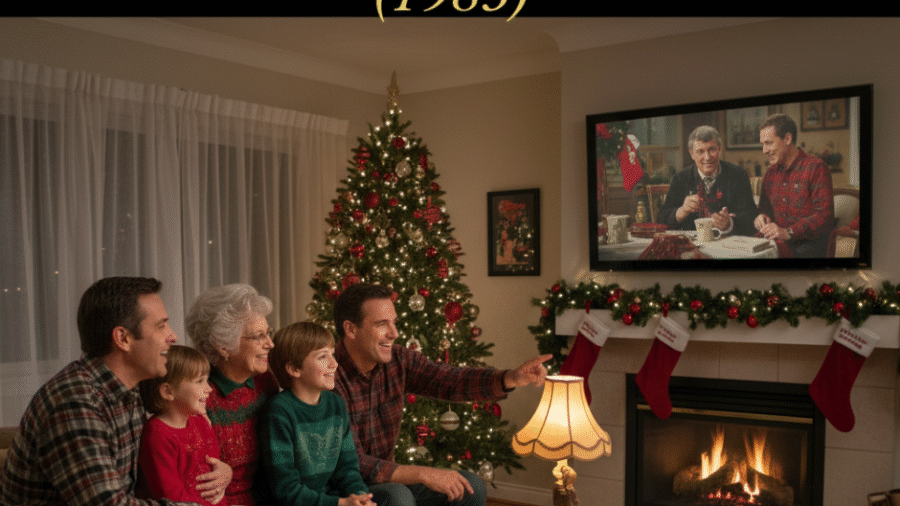Since its release in 1983, Impact of A Christmas Story has blossomed from a modestly received film into a monumental piece of holiday pop culture revered by millions worldwide. Its bittersweet humor, relatable characters,
and nostalgic portrayal of a bygone era have cemented its place as an enduring Christmas classic. Beyond being just a movie, A Christmas Story has influenced holiday traditions, popular media, merchandise, and even architecture, permeating diverse aspects of popular culture.
This article explores the vast cultural impact of A Christmas Story, examining how a film rooted in mid-20th century Americana grew to become a defining element of holiday celebrations and an emblem of nostalgic storytelling.
Breaking the Mold of Traditional Christmas Movies
When A Christmas Story premiered, it diverged from conventional holiday films dominated by religious themes, fantasy, or moral lessons. Instead, it offered a humorous yet heartfelt glimpse into the life of an ordinary family, narrated through the eyes of a young boy. Its focus on childhood desires, family quirks, and the imperfections of holiday gatherings struck a fresh chord with audiences craving authenticity during the festive season.
This new paradigm inspired other filmmakers to explore holiday movies that reflect varied
and relatable experiences rather than solely relying on the magical or moralistic elements dominant at the time.
Television Marathons and Annual Rituals
The rise of A Christmas Story as a pop culture staple is closely tied to its broadcasting history. Beginning in the late 1990s, Turner Broadcasting System (TBS) and TNT instituted continuous 24-hour Christmas Eve
and Christmas Day marathons of the film—broadcasting it without interruption for a full day.
This novel programming practice transformed the movie into an essential holiday ritual for families, businesses, and community gatherings. Year after year, viewers anticipate the marathon as part of their Yuletide celebrations. This type of marathon has been credited with renewing the film’s popularity, expanding its reach, and embedding it deeply in holiday culture.
Iconic Quotes and Memorable Scenes Entering Everyday Language
Several quotes from A Christmas Story have transcended their film context, becoming catchphrases frequently referenced in popular media and everyday conversations. Lines such as “You’ll shoot your eye out!” and “I triple dog dare you” delight fans with their enduring recognition.
Scenes like Flick’s tongue on the frozen flagpole or the leg lamp holiday display have become symbols within
and beyond the film’s fanbase. These moments are referenced in advertisements, parodies, television shows, and holiday merchandise, contributing to the film’s iconic status.
The Leg Lamp: A Symbol of Holiday Kitsch
Perhaps no prop has achieved a more unique place in pop culture than the leg lamp from A Christmas Story. Emblazoned as the “major award,” this kitschy, risqué holiday decoration embodies the movie’s blend of humor and nostalgia.
Replicas of the leg lamp are popular gift items and decorations during the Christmas season. Its image is used widely in merchandise, from t-shirts to ornaments, highlighting how A Christmas Story has influenced festive aesthetics and humor, redefining kitsch in a playful, affectionate manner.
Influence on Holiday Merchandise and Tourism
The film’s cultural significance extends to an extensive range of merchandise. Official licensing has produced items like Red Ryder BB gun replicas, pink bunny pajamas, ornaments, and village collections that let fans recreate the fictional town of Hohman.
Beyond merchandise, A Christmas Story’s legacy includes tourism. The house used as the Parker family home in Cleveland has been restored and converted into a museum and holiday attraction. Visitors can tour the house
and museum year-round, experiencing the film’s iconic settings firsthand.
These developments showcase how the film’s influence permeates physical spaces, enhancing fan engagement and economic activity related to holiday tourism.
Inspiring New Generations and Holiday Media
A Christmas Story inspires not only nostalgia for older generations but also introduces younger audiences to mid-century Americana and timeless holiday themes. Through streaming platforms, home video,
and television marathons, new generations encounter Ralphie’s story, ensuring its continued relevance.
Additionally, the film has been the catalyst for sequels such as A Christmas Story Christmas (2022), further extending its narrative and cultural footprint. Its themes echo in other holiday films
and TV specials, underscoring the value of authentic storytelling centered on family, hope, and humor.
Critical and Scholarly Recognition
The film is recognized academically and critically for its cultural importance. The United States Library of Congress selected A Christmas Story for preservation in the National Film Registry in 2012, highlighting its cultural, historical, and aesthetic significance.
Film scholars analyze it for its depiction of nostalgia, family dynamics, and American identity in the post-Depression, pre-WWII era. This institutional acknowledgment reflects its elevated status beyond entertainment into cultural heritage.
Read More: A Christmas Story (1983): A Definitive Film Overview
Conclusion
Impact of A Christmas Story has profoundly shaped holiday pop culture since 1983. Its shift away from conventional holiday storytelling to authentic, humorous family portraits fueled new traditions, iconic imagery,
and broad cultural resonance. From television marathons to merchandise and tourism, its impact is multifaceted and enduring.


Add a Comment